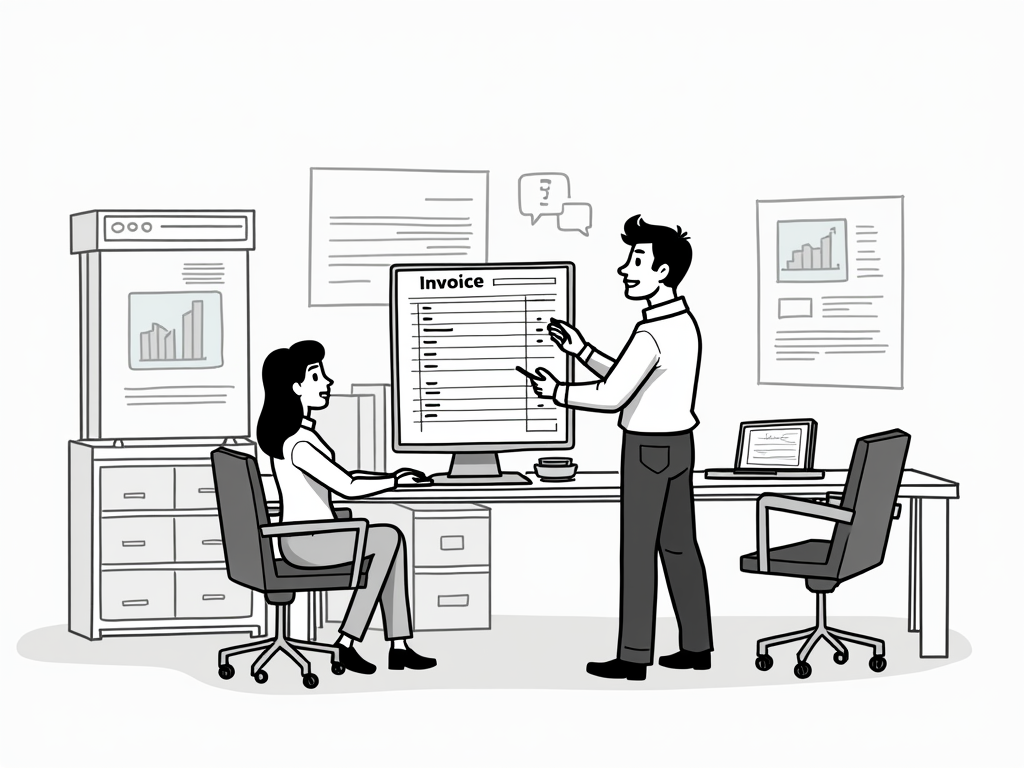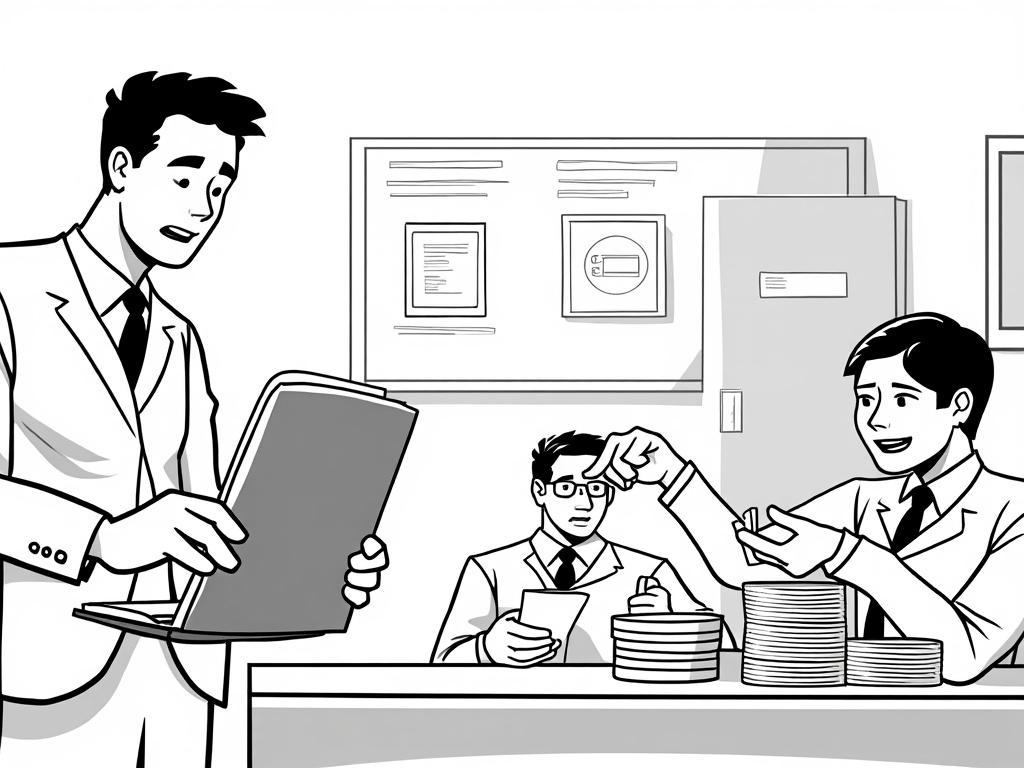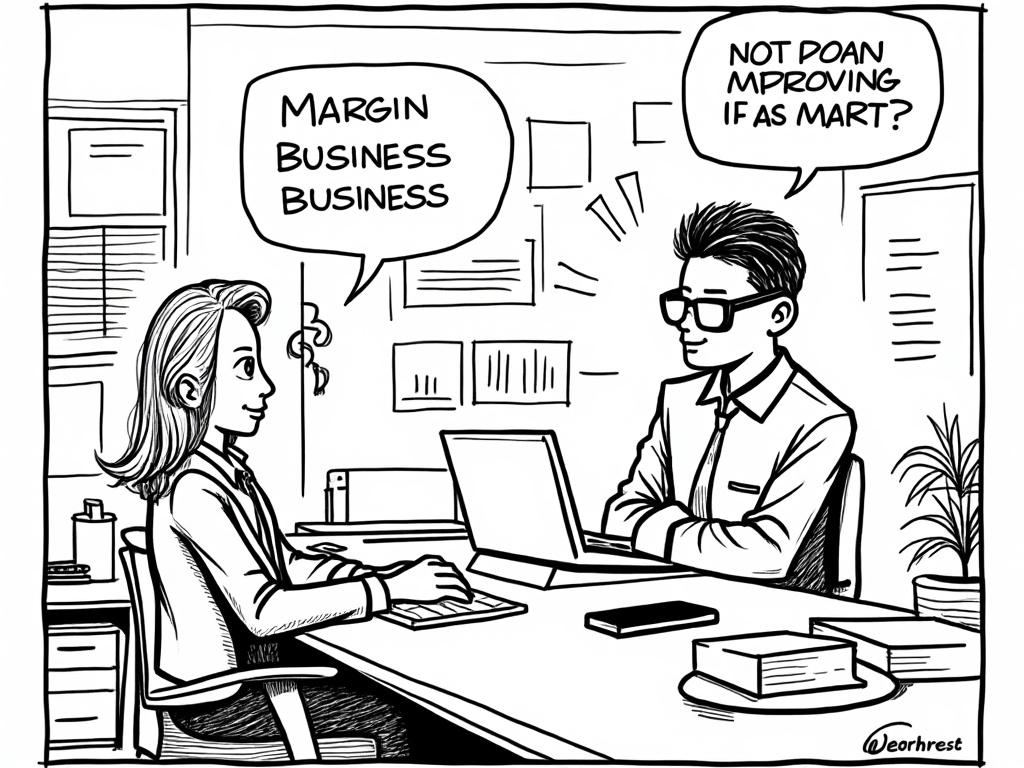
Charging VAT in Germany: When Do You Need to Add VAT to Your Invoices?
Reading time: 12 minutes
Table of Contents
- Understanding German VAT: The Essentials
- When Must You Charge VAT on Your Invoices?
- Key VAT Exemptions and Reduced Rates
- Cross-Border Transactions: Special Considerations
- VAT Compliance and Documentation Requirements
- Digital Services and VAT in Germany
- Common VAT Mistakes and How to Avoid Them
- Conclusion: Navigating German VAT with Confidence
- Frequently Asked Questions
Understanding German VAT: The Essentials
Ever found yourself staring at an invoice template, cursor blinking, wondering whether to add that VAT line? You’re not alone. German VAT (Umsatzsteuer or Mehrwertsteuer in German) can feel like navigating a labyrinth without a map—especially for entrepreneurs and businesses new to the German market.
At its core, German VAT operates on a straightforward principle: it’s a consumption tax added to the value of goods and services at each stage of production and distribution. But as with many tax matters, the devil lies in the details.
The German VAT Landscape: Key Rates
Germany employs a tiered VAT rate system:
- Standard rate (19%): Applies to most goods and services
- Reduced rate (7%): Applies to essential items like food, books, and public transportation
- Zero rate (0%): Applies to certain cross-border transactions
These rates aren’t arbitrary—they reflect Germany’s policy priorities and its implementation of EU VAT directives. The standard 19% rate has remained stable since 2007, providing predictability for businesses operating in the German market.
Pro Tip: Don’t assume that similar products always fall under the same VAT category. For example, while books qualify for the reduced 7% rate, e-books were taxed at 19% until 2020 when they finally received the reduced rate treatment.
The Foundation: VAT Registration Thresholds
Before you even worry about charging VAT, you need to know if you’re obligated to register for VAT in Germany. Unlike some EU countries with generous thresholds, Germany has relatively strict requirements:
If you’re a business established in Germany, you must register for VAT if:
- Your turnover exceeded €22,000 in the previous calendar year, or
- Your estimated turnover for the current year will exceed €50,000
For businesses not established in Germany but selling to German customers, different rules apply—which we’ll explore in our cross-border section.
Well, here’s the straight talk: VAT registration isn’t just about compliance—it’s about positioning your business correctly in the German market from day one.
When Must You Charge VAT on Your Invoices?
The fundamental rule is deceptively simple: if you’re VAT-registered in Germany, you must charge VAT on taxable supplies of goods and services within Germany. But business reality rarely fits neatly into tax regulations.
The Basic Criteria for Charging VAT
You must add VAT to your invoices when all of these conditions are met:
- You’re registered for VAT in Germany
- You’re providing taxable goods or services (not exempt)
- The place of supply is deemed to be in Germany
- The recipient is not eligible for reverse charge mechanisms
Quick Scenario: Imagine you run a consulting firm based in Munich. You provide strategy services to a local manufacturing company. Since both you and your client are based in Germany, and consulting services aren’t exempt, you must charge the standard 19% VAT on your invoice.
But what if your client is a business in France? Or what if you’re selling digital services to consumers across Europe? This is where it gets more nuanced.
B2B vs. B2C Transactions: Critical Differences
The VAT treatment differs significantly depending on whether you’re selling to businesses (B2B) or consumers (B2C):
| Transaction Type | Customer Location | VAT Treatment | Required Documentation | Invoice Statement |
|---|---|---|---|---|
| B2B (German customer) | Germany | Charge 19% German VAT | Valid invoice with VAT ID | None specific |
| B2B (EU customer) | Other EU country | Zero-rated, reverse charge applies | Valid VAT ID verification | “Reverse Charge: VAT to be paid by the recipient” |
| B2C (German customer) | Germany | Charge 19% German VAT | Standard invoice | None specific |
| B2C (EU customer) | Other EU country | Depends on thresholds/goods type | Evidence of customer location | Varies by situation |
| B2B/B2C (non-EU) | Outside EU | Generally VAT exempt (export) | Export documentation | “Tax-free export delivery” |
As you can see, determining when to charge VAT isn’t just about knowing the rate—it’s about understanding the nature of your transaction and your customer’s status.
“The most common mistake businesses make is failing to correctly determine the place of supply,” notes Thomas Weber, a tax advisor specializing in German VAT at DKT Advisory. “Especially with digital services, many assume that since they’re based in Germany, German VAT always applies—which isn’t the case.”
Key VAT Exemptions and Reduced Rates
Not all goods and services are created equal in the eyes of German VAT law. Understanding exemptions and reduced rates can significantly impact your pricing strategy and cash flow.
VAT-Exempt Supplies: When No VAT Applies
Certain supplies are exempt from VAT altogether, meaning you don’t charge VAT, but this comes with a catch—you typically can’t recover input VAT on related expenses. Key exempt categories include:
- Financial services: Banking, insurance, and certain investment activities
- Healthcare services: Medical and dental care provided by recognized professionals
- Educational services: When provided by recognized educational institutions
- Real estate transactions: Long-term property leasing and sales of buildings (with exceptions)
- Postal services: Those provided by the universal service provider
Case Study: The Medical Practice Dilemma
Dr. Müller runs a private medical practice in Berlin. Most of her services are exempt from VAT as healthcare services. However, when she provides cosmetic procedures that aren’t medically necessary, these are subject to the standard 19% VAT rate. This creates a complex accounting situation where she must carefully track which services fall into which category.
“For businesses providing both exempt and taxable supplies, proper accounting systems are essential,” advises Claudia Schmidt, a certified tax consultant. “You’ll need to implement partial input tax recovery methods and maintain meticulous records to satisfy tax authorities.”
Reduced VAT Rates: The 7% Category
Germany’s reduced 7% VAT rate applies to goods and services considered basic necessities or culturally significant, including:
- Food items (except for prepared meals and beverages)
- Books, newspapers, and periodicals (including e-books since 2020)
- Public transportation (short-distance)
- Hotel accommodations (not including additional services like breakfast)
- Admission to cultural events and museums
- Agricultural products
The COVID-19 pandemic temporarily saw Germany reduce VAT rates to stimulate economic activity (from 19% to 16% and from 7% to 5%), demonstrating how VAT can be used as an economic policy tool. However, these temporary reductions ended on December 31, 2020.
Pro Tip: The right preparation isn’t just about avoiding problems—it’s about creating scalable, resilient business foundations. Always document your reasoning for applying a reduced rate or exemption, as these are frequent audit targets.
Cross-Border Transactions: Special Considerations
Cross-border transactions introduce additional complexity to German VAT requirements. Whether you’re importing, exporting, or selling across EU borders, specific rules apply.
Intra-EU Transactions: The B2B Scenario
When selling goods to VAT-registered businesses in other EU countries, the transaction is typically zero-rated in Germany, with the customer accounting for VAT in their country through the reverse charge mechanism. However, several conditions must be met:
- You must verify and record the customer’s valid VAT identification number
- You must have evidence that the goods have been transported to another EU country
- Your invoice must include specific language about the reverse charge mechanism
- You must report these transactions on your periodic EC Sales List (Zusammenfassende Meldung)
Failure to meet these requirements could result in German tax authorities demanding the 19% VAT that would have applied to a domestic sale.
Distance Selling to EU Consumers
Prior to July 2021, businesses selling goods to consumers in other EU countries had to monitor country-specific thresholds that triggered VAT registration requirements. However, the EU has implemented significant changes:
Under the current One-Stop Shop (OSS) system:
- The country-specific thresholds have been replaced with a single EU-wide threshold of €10,000 for total cross-border B2C sales
- Once exceeded, you charge VAT at the rate applicable in the customer’s country
- You can report and pay all EU VAT through a single OSS return in Germany, rather than registering in multiple countries
This represents a significant simplification, though it requires businesses to be familiar with VAT rates across all EU member states where they have customers.
Imports and Exports Outside the EU
For transactions with non-EU countries:
- Exports: Goods exported outside the EU are generally zero-rated, provided you maintain proper export documentation
- Imports: Import VAT is payable when goods enter Germany from non-EU countries, usually at the standard rate of 19%
Since July 2021, the Import One-Stop Shop (IOSS) has simplified VAT on imported goods valued under €150 sold to EU consumers, allowing businesses to collect and remit VAT at the point of sale rather than having customers pay upon delivery.
Case Study: The Online Retailer’s Challenge
Berlin-based Kleider GmbH sells handcrafted clothing items online. When they started shipping to customers throughout Europe, they initially tracked each country’s distance selling threshold. After exceeding France’s threshold, they had to register for French VAT and file returns both in Germany and France. After the OSS implementation in 2021, they now handle all their EU VAT obligations through a single OSS return filed with the German tax authorities, significantly reducing their administrative burden while ensuring compliance across all EU markets.
VAT Compliance and Documentation Requirements
Proper VAT documentation isn’t just good practice—it’s legally required. German tax authorities are known for their thoroughness during audits, making comprehensive record-keeping essential.
Invoice Requirements for VAT Purposes
German VAT law specifies exact requirements for valid invoices. Missing elements can result in customers being unable to claim input tax and potential penalties for the issuer. A compliant invoice must contain:
- Your full name and address
- Your tax identification number or VAT ID number
- Customer’s full name and address
- Customer’s VAT ID (for B2B transactions within the EU)
- Invoice date and unique sequential invoice number
- Description of goods/services provided
- Quantity and nature of goods/extent of services
- Date of supply (if different from invoice date)
- Net amount per item and total
- Applied VAT rate(s) and total VAT amount
- Reason for VAT exemption or reverse charge (if applicable)
- For certain transactions: “Steuerschuldnerschaft des Leistungsempfängers” (reverse charge notation)
Small businesses with annual turnover below €22,000 can issue simplified invoices for amounts up to €250, which require less detail.
VAT Filing and Payment Deadlines
German VAT obligations follow a structured schedule:
- Monthly returns: Required for new businesses in their first two years and those with annual VAT liability exceeding €7,500
- Quarterly returns: For businesses with annual VAT liability between €1,000 and €7,500
- Annual returns: Required for all VAT-registered businesses, due May 31 of the following year (extensions possible)
Returns must be filed electronically using approved software that meets the ELSTER format requirements. Payments are typically due by the 10th day of the month following the reporting period, though a permanent extension (Dauerfristverlängerung) of one month is possible upon application, usually requiring a special advance payment.
Pro Tip: The right preparation isn’t just about avoiding problems—it’s about creating scalable, resilient business foundations. Set up recurring calendar reminders for VAT deadlines, as late filings incur penalties of up to 10% of the tax due (maximum €25,000).
Digital Services and VAT in Germany
The digital economy presents unique VAT challenges, especially for services delivered electronically across borders. Since 2015, significant changes have affected how these transactions are taxed.
Place of Supply Rules for Digital Services
For digitally supplied services (such as software downloads, streaming services, online courses, and app purchases), the place of supply is determined by the customer’s location, not the supplier’s:
- B2B transactions: The place of supply is where the business customer is established. The reverse charge mechanism typically applies.
- B2C transactions: The place of supply is where the consumer is located, meaning you charge VAT at the rate applicable in the consumer’s country.
This creates complexity for digital service providers who must either register in multiple EU countries or use the simplified One-Stop Shop (OSS) mechanism.
Evidence Requirements for Customer Location
Correctly determining a customer’s location is crucial for digital services. German and EU regulations require businesses to collect and maintain at least two non-contradictory pieces of evidence, such as:
- Billing address
- IP address
- Bank details
- Country code of SIM card
- Fixed landline location
“Digital service providers often underestimate the importance of location verification systems,” explains Dr. Jana Fischer, digital tax specialist. “During audits, tax authorities specifically look for robust evidence of customer location determination. Without proper systems, businesses risk significant VAT reassessments.”
Case Study: The SaaS Company’s Solution
Munich-based CloudSolutions GmbH provides subscription-based software to customers throughout Europe. Initially, they struggled with determining correct VAT treatment for their diverse customer base. They implemented a two-stage verification system that captures IP address at registration and billing address during payment processing. Their invoicing system automatically calculates the appropriate VAT based on customer type (business vs. consumer) and location. For B2B customers, they implemented automatic VAT ID validation through the EU VIES system. This comprehensive approach has streamlined their compliance while minimizing risk during tax audits.
Common VAT Mistakes and How to Avoid Them
Even experienced businesses make VAT errors. Understanding the most common pitfalls can help you avoid costly mistakes.
Misconceptions About VAT Liability
Many businesses operate under dangerous assumptions about when German VAT applies:
- Threshold confusion: Failing to understand that different thresholds apply to different situations (domestic registration vs. distance selling)
- Missing nexus triggers: Not realizing that storing inventory in Germany or having staff there can create VAT obligations regardless of sales volume
- Exemption overreliance: Incorrectly applying exemptions without meeting all necessary conditions
- Digital misclassification: Treating all electronic deliveries the same way without proper analysis of their true nature
Well, here’s the straight talk: VAT compliance isn’t optional, and misunderstandings don’t constitute valid defenses during tax audits.
Practical Strategies for VAT Risk Management
To minimize VAT-related risks, implement these practical approaches:
- Regular compliance reviews: Schedule quarterly internal reviews of your VAT procedures
- Staff training: Ensure sales and finance teams understand basic VAT principles
- Technology investment: Implement automated VAT determination for invoicing
- Documentation protocols: Create standardized procedures for maintaining evidence of customer status and transaction details
- Expert consultation: Engage with VAT specialists for annual compliance checks and when entering new markets
According to a 2022 survey by the German Chamber of Commerce, businesses that implement structured VAT compliance programs experience 64% fewer issues during tax audits compared to those without formal processes.
Pro Tip: Document your VAT decision-making process. When German tax authorities review your VAT treatment, being able to demonstrate thoughtful analysis (even if ultimately incorrect) can help mitigate penalties.
Conclusion: Navigating German VAT with Confidence
German VAT compliance may seem daunting, but with systematic approach, it becomes manageable. The key is understanding when you need to charge VAT and implementing robust processes to ensure you meet all requirements.
Remember these essential principles:
- VAT obligations depend on transaction type, customer status, and location
- Documentation is crucial—both for invoices and supporting evidence
- Different rules apply to goods versus services, especially digital ones
- Cross-border transactions require special attention to place of supply rules
- Regular reviews and updates to your VAT procedures protect against costly errors
As Germany continues to digitalize its tax administration through initiatives like ELSTER and real-time reporting requirements, staying current with compliance expectations becomes increasingly important.
Successful VAT management isn’t about perfection—it’s about strategic navigation of a complex but logical system. With proper planning and ongoing attention, German VAT can transition from a business risk to a well-managed operational function.
Frequently Asked Questions
What happens if I exceed the German VAT registration threshold mid-year?
If you exceed the German VAT registration threshold (€22,000 for the previous year or projected €50,000 for the current year) during the year, you must register for VAT immediately. You’re required to charge VAT from the beginning of the month in which you exceeded the threshold. You’ll need to submit an application to the tax office (Finanzamt) responsible for your area, and once registered, you’ll receive a tax number and VAT identification number. Retroactive registration may be required if you should have registered earlier, potentially leading to interest charges on late VAT payments.
How do I handle VAT for transactions with the UK after Brexit?
Since Brexit, the UK is treated as a non-EU country for VAT purposes. This means exports of goods from Germany to the UK are zero-rated (exempt with input tax credit), provided you maintain proper export documentation. For services, the place of supply rules generally remain similar to before, with B2B services typically subject to reverse charge. However, the UK is no longer part of the EU’s One-Stop Shop system, so digital services to UK consumers require UK VAT registration if thresholds are exceeded. Additionally, goods imported into Germany from the UK are now subject to import VAT and potentially customs duties, unlike the VAT-free movement that existed pre-Brexit.
Can I reclaim German VAT if I’m a foreign business without a German VAT registration?
Yes, foreign businesses not registered for VAT in Germany can reclaim German VAT incurred on business expenses through specific refund procedures. EU businesses use the electronic VAT refund system through their home country’s tax portal. Non-EU businesses must use the 13th Directive refund procedure by submitting application form VAT 1A to the Federal Central Tax Office (Bundeszentralamt für Steuern) in Bonn. Applications from EU businesses must be submitted by September 30 of the year following the refund period, while non-EU businesses generally face a June 30 deadline. Strict documentation requirements apply, including original invoices for non-EU applicants, and refunds are subject to reciprocity agreements for non-EU countries.



